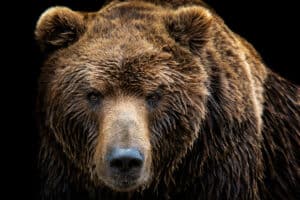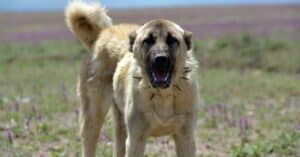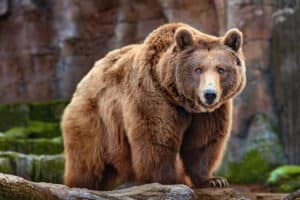Continue reading for our analysis...
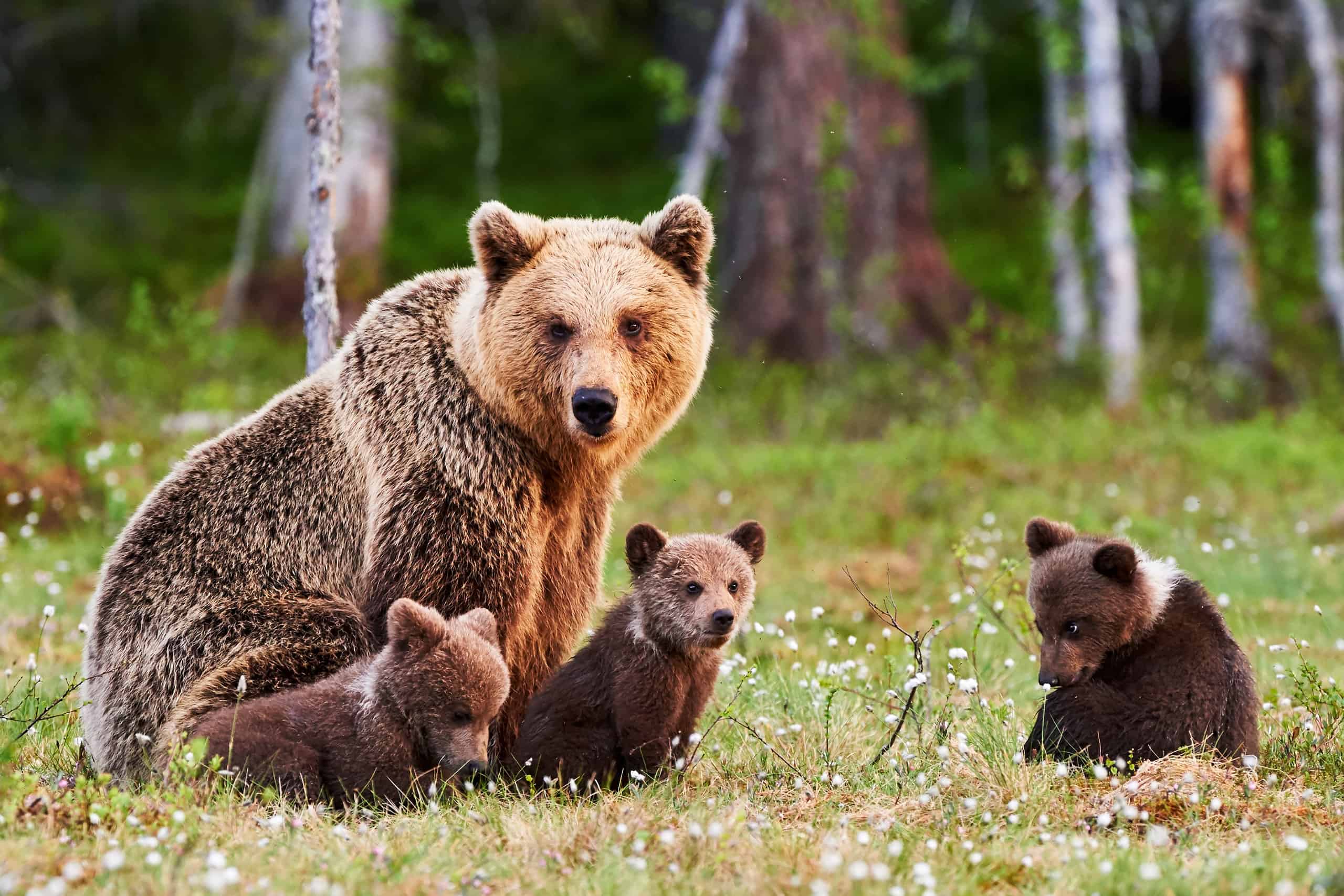
We all know not to mess with a mama bear (whether the actual bear species or a protective human mama relying on her instincts). One bear cub learned that lesson when he wasn’t listening to his mama. She picked him up in her mouth and pushed him to the safety of the roadside.
The people shooting the short clip wisely stayed in their car during the entire encounter.
“Oh, she’s mad,” says the woman. It’s not clear if she has her own children or not. But if she does, chances are that she can relate to this bear mama and has felt that same frustration when an unruly cub or toddler just won’t listen.
“Yeah, she’s trying to get him to follow,” replies the man. The way he says it, we can imagine that he has been in the position of having to get a young child to cross the road safely when they just don’t want to listen.
He seems to empathize with the frustrated mama bear but is still smart enough to know not to get in her way. Both people stay in the car as the pair of bears crosses the road and goes off into the forest.
Don’t Mess With Mama Bear
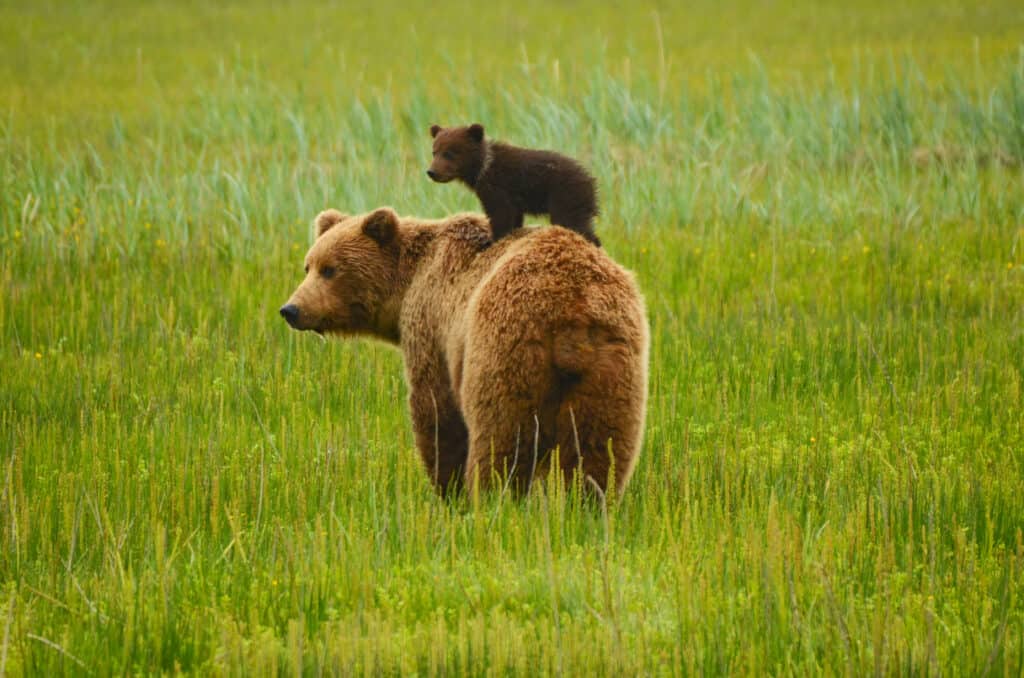
Mother bears need to teach cubs many different lessons and discipline is one of them.
©David Rasmus/Shutterstock.com
Bear moms are some of the most protective. In fact, many fatal human and bear encounters occur when a person gets between a mama bear and her cubs. These protective parents will not hesitate to take on any other animal when it comes to their cubs’ safety.
In this case, the cub was in danger from his own silliness. The mama bear knew that stopping in the middle of the road wasn’t safe and that both she and her cub needed to cross quickly. If you are a parent, that probably sounds at least a little bit familiar.
Bears are also very fast, which is another reason that it’s never a good idea to try to outrun a bear. They can reach speeds up to 35 miles per hour! Want to avoid being attacked by a bear? The best thing to do is just avoid them and give them their space.
If you see a bear nearby, pay attention to its behavior and back away slowly. If it starts to pay more attention to you, rears up on its hind legs, or starts to charge, you are probably getting too close to its cubs.
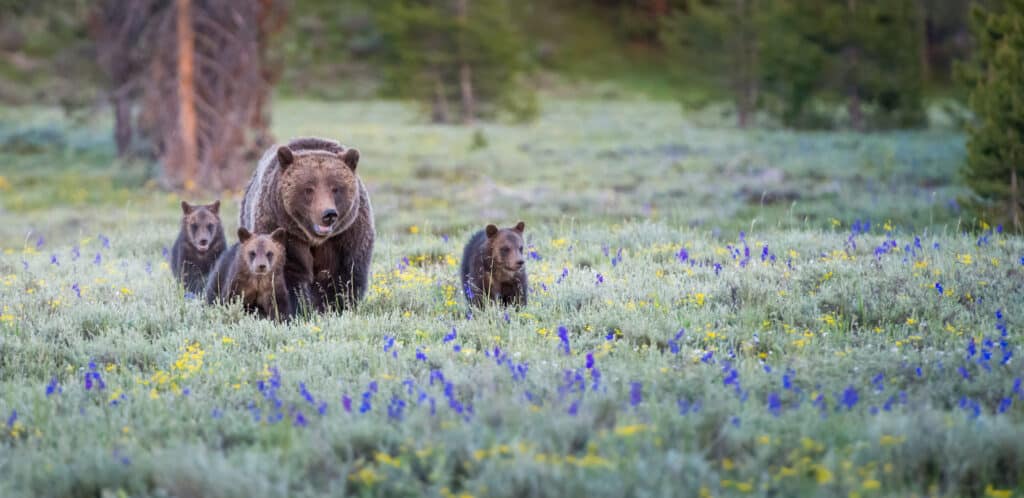
Grizzly bears in the wild
©iStock.com/Jillian Cooper
Fortunately for these viewers, the mama bear’s wrath was focused on her disobedient cub. If they had gotten out of their car to get a better look, the situation could have changed very quickly. Instead, they let her grab her cub and go back off into the wild.
This isn’t the first time that bear cubs have gotten themselves into predicaments. Check out some of our other videos for funny encounters with bear cubs intent on making mischief.
Sometimes mama bear lets them play and be silly. Other times, like this video, she’s had enough. We’re right there with you, mama bear!
Is It Normal For Bears To Discipline Their Cubs?
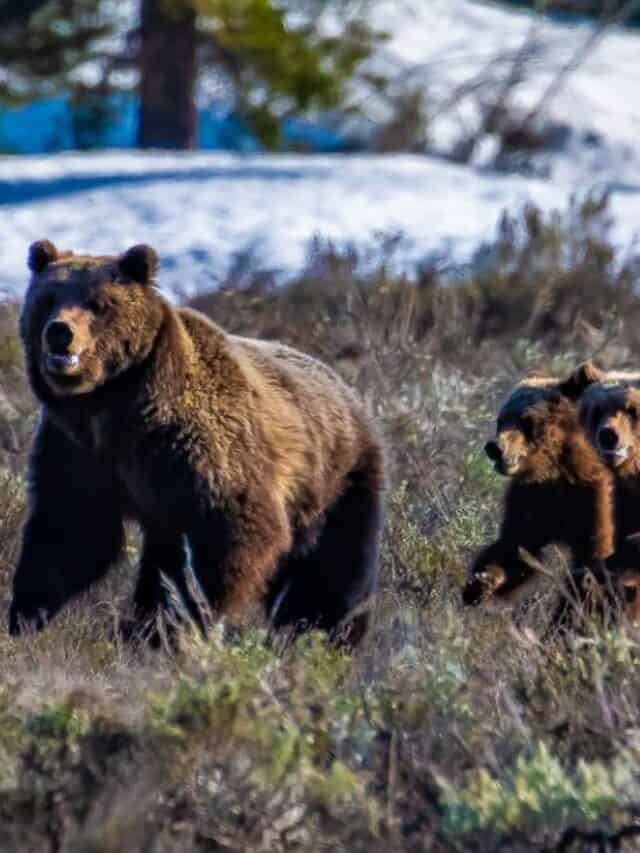
Mother bears will do what they must to protect their cubs.
©iStock.com/John Morrison
In general, bears are good mothers and are known for their protective nature over their cubs. However, that isn’t to say that baby cubs don’t need to be disciplined like typical youngsters. Play fighting is important for young bears because it teaches them how to protect themselves as an adult bear.
However, if a mother bear doesn’t like what’s happening, she will do what she needs to do to stop her young and protect them from outside dangers. Just like a human mother will insure her child safely crosses a road, so will a mama bear. If her cub won’t follow direction, she will carry him or nudge him where he needs to go.
What Litter Size Do Black Bears Normally Have?
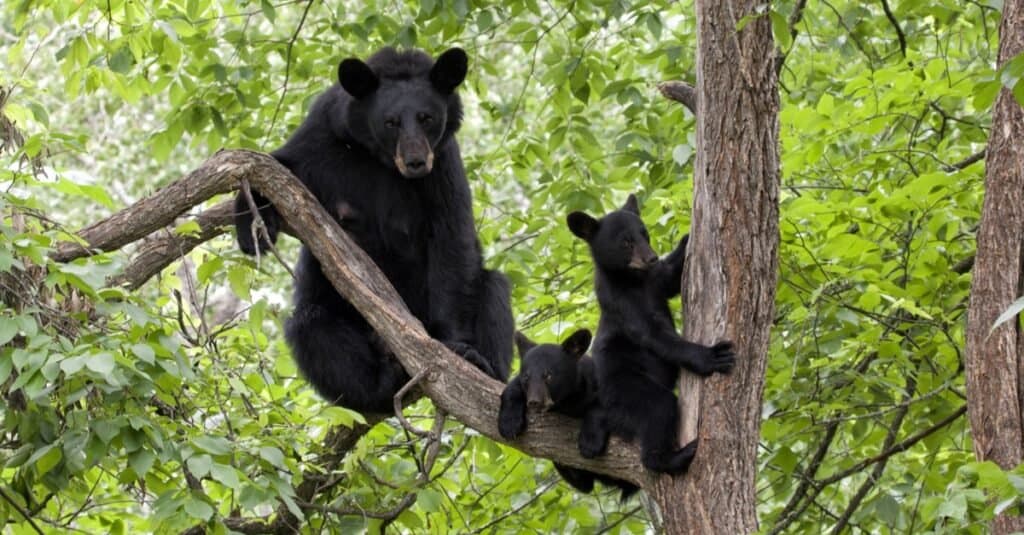
Black bears normally give birth to two or three cubs at once although they can give birth to more
©Debbie Steinhausser/Shutterstock.com
What Litter Size Do Black Bears Normally Have?
Black bears normally give birth to two or three cubs at a time. Most often they will give birth in January or February after a gestation period of about 220 days. It is worth noting that the cubs may have a different coloration compared to their mother since black bears have been known to have brown, cinnamon, or even white fur.
According to experts, they are more likely to give birth to triplets in regions where food is especially abundant. For example, the eastern part of North America is considered to be more conducive to multiple births compared to the western parts, for that very reason.
However, they can give birth to more. In 2007 Tom Sears spotted a litter of five which all survived their first year, a feat of survival considered to be pretty impressive and attributed to the abundance of food in their vicinity.
The largest litter ever recorded for a black bear is six in Pennsylvania although claims of seven were put forward by a New Jersey resident in the spring of 2016.
Where Do Black Bears Live?
Black bears are pretty common throughout the Pacific Northwest forests and mountains. Although, sometimes their travels take them across roads and highways, as seen in the video below. They are usually found in the mountains of Canada, Alaska, the Rocky Mountains, and other areas in the upper Midwest.
Lifespan: How Long Do Black Bears Live?
Male black bears will continue to grow up until they are about seven years old. Females may stop growing a little sooner. Bears can live up to about 25 to 30 years old, but most animals in the wild tend to not live past 10 years old. In captivity, bears are known to live much, much longer.
Thank you for reading! Have some feedback for us? Contact the AZ Animals editorial team.



